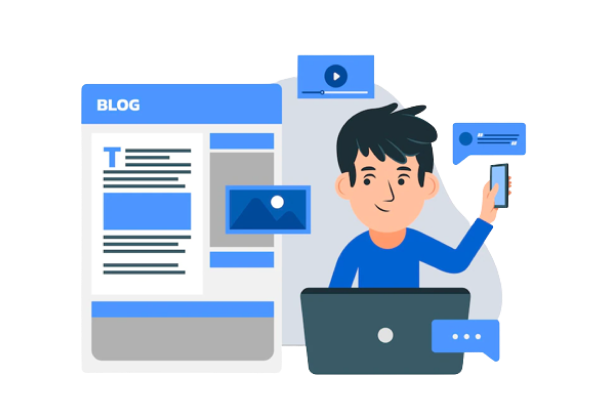OUR BLOGS
Get Updated with the latest news, thoughts, ideas,
tips, digital innovation and much more.


UX and UI in 2022
The saying that design can make or break your product is not an exaggeration. The numbers speak for themselves — 50% of consumers believe that a company’s website is crucial to their opinion of the brand. In addition, businesses that embrace design showed 32% higher revenue growth.
Scrollytelling
As the name suggests, scrollytelling combines storytelling and scrolling to create memorable user experiences. This is a technique where with each scroll different UI elements — images, snippets of text, fonts — come to life. No clicks, no pop-ups, just a gradually unfolding story that users actually want to read.
Scrollytelling can help turn even boring instructions into an engaging experience. Just look how Google has leveraged this method to explain how search works in a fun and dynamic way.
Aesthetic minimalism
There are some things that will never go out of fashion, and minimalism is definitely one of them. Clean, fresh, and uncluttered design is what makes a message really stand out. Fewer decorative elements, colors, pop-up windows reduce distractions and decrease the cognitive load, helping users better focus on their task at hand. Tech leaders like Apple, Meta, Revolut, and others are well-known for their minimalistic yet powerful designs.
Advanced micro-interactions
An integral part of any UX/UI design, micro-interactions are small functions that allow users to accomplish a single task. Likes and shares on Facebook, a “Skip intro” button on Netflix or even a snooze button on your alarm — these are all examples of micro-interactions tightly woven into product design. These tiny details have a huge impact on a user experience as they provide instant visual feedback to keep users informed.
There are different types of micro-interactions that can help make user experiences more rewarding — mouse hover effects, swipe/slide, data input and progress, tap and click, and more. And given the visual nature of users, designers can incorporate functional micro-animations to drive better engagement.
3D immersive visuals
In recent years, the development of technology has made 3D graphics more accessible, pushing it to the forefront of web design. From advanced animations to graphic elements to immersive illustrations, the 3D design brings a new level of excitement and enables more engaging and interactive user experiences.
Companies that want to add an interesting twist to their online branding, use 3D animations in their logos. Dynamic animated logos are a great way to capture users`attention while also demonstrating brand history or even values.
Data visualization
An important part of a user experience is to be able to make sense of large amounts of data quickly. And since over 65% of people are visual learners, it’s crucial to ensure that data you want to share is simple and easy to understand.
Essentially, data visualization is all about representing complex datasets with the help of visual means. It helps convey the right message in an interactive way. You can use charts, graphs, infographics, images and even animations to present your information creatively without increasing the cognitive load for users.
Neumorphism
Another visual trend that is currently gaining traction is neumorphism that has become popular due to its subtle but fresh and innovative look. Marked by minimal and real-looking elements, neumorphism draws on skeuomorphism and 3D design to bring physical attributes like shadows and textures to digital interfaces.
In neumorphic design, it’s all about light and shadows. Designers combine a monochromatic color palette with shadowing to make UI elements appear protruding from the background.
